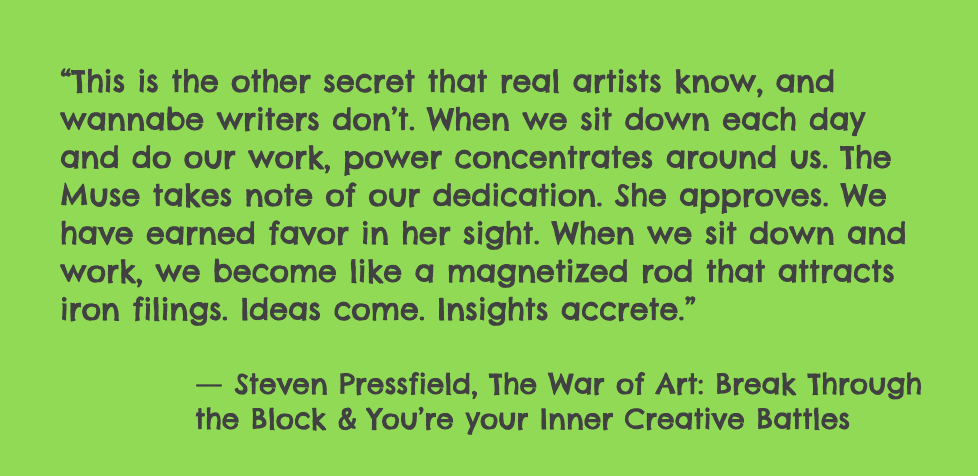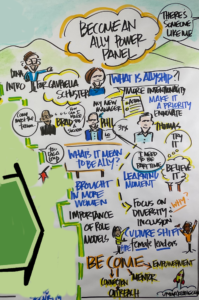
Sometimes change happens so fast we can hardly keep up. Have you ever wanted something to change and it happened so quickly that it felt like magic? Later, looking back you thought, “Wow, that was incredible! How did that happen so fast?” In the land of change, time appears to be very, very flexible. You, your belief and your ability to be prepared are also important keys to help you open the doors to your desired future state.
When we were planning to move to Portland, we searched, and searched, and searched for what seemed like an eternity for a new home. While the searching was an arduous task, we finally found the house we wanted. We worried the sale might not go through for all the reasons home buyers feel anxious when making such a big decision. To our surprise the loan was approved almost immediately, and the sellers accepted our first offer. In less than a month we were moving into our new home.
Everything had gone so smoothly that, frankly, it left our heads spinning! We were curious how it had seemed like so long to find the house, but the closing seemed to happen so quickly. When purchasing our first home in Seattle eight years earlier, we made multiple offers on a myriad of homes and were beat out with cash at every turn. It seemed so difficult. Then when we found a house, they lost our loan paperwork, we had to send it to the lender time and again.
So, when buying our Portland home, we had learned from that wonky experience in Seattle, and we did a few things in advance to prepare. We had all the paperwork dialed in and we chose a mortgage lender who was superb, organized, helpful and friendly. That meant if anything else was needed, we were happy to comply. We also were not attached to the outcome. Naturally we wanted a great home, but we both saw Portland as an adventure, and agreed that we would just listen to our Creative Genius nudges and trust that we would find a home in the perfect spot. We had also made a drawing of the kind of home we were thinking about and a list of things we wanted in the home – lots of light, high ceilings, yard for the dogs, great neighbors. We kept that picture and shared it with our realtor so she knew exactly what we were looking for. All of these things added to the ease of sale.
I have noticed that when things are easy, we often say it was “meant to be”; however, when things don’t work out as we hoped we shrug and say the exact opposite. But what if it’s all meant to be, that every experience is there just for you. If you hold that belief, then it puts the onus on you to unravel for yourself the mystery of why things went in one direction instead of another. Clearly there is something to be learned when anything happens. When it doesn’t turn out as you’d imagined, rather than whining and complaining, I have found it is much easier to find a way to reactivate my desire, imagine the outcome, and get back to work.
If you shift your focus to pay attention to the amazing things that are occurring right now, and all the things that are not happening as you hoped they would, you may discern a pattern. Not all big things happen the way we hope they will. Sometimes small changes have an even more profound way of moving us in the direction of our goals and getting us back on track. Small steps add up to bold steps. Small actions underlie each piece of the Creative Genius equation. Together they help you achieve that outcome beyond your expectations. You can be prepared outwardly but you also need to prepare yourself inwardly. Sometimes the inner preparation makes the difference in timing. You are ready on all levels.
Step Out of Your Head and into Mindfulness
At first, driving a car is a really complicated, stressful experience: hand signals, traffic lights, speed limits, all those cars whizzing by you. Do you remember how it felt? Every intersection generated panic. After a while your brain created pattern memories of how to drive allowing your neural pathways to automatically provide you with direction. It’s astounding to stop and think about how many things your brain does automatically! While this function of the brain makes it possible to move through our days without having to fully concentrate on every little thing we do, the challenge is to be able to move out of this state when needed. Your head gets all wrapped up in “when and where is this or that going to happen!” One way to unlock your worrying mind is by altering your consciousness through meditation or other mindfulness practices.
One goal of mindfulness is to create a state of awareness in which your mind is calm and completely alert – sidestepping that worrying you. When you meditate on a regular basis, several positive things happen. In the article, This is Your Brain on Meditation, Dr. Rebecca Gladding describes what happens to your brain when you meditate. “First, the strong, tightly held connection between what is the Me Center, specifically the unhealthy parts of us that are critical and the bodily sensation/fear centers, begin to break down. As this connection withers, you will no longer assume that a bodily sensation or momentary feeling of fear means something is wrong with you or that you are the problem!” What this means is that you can learn to shift your anxiety by simply taking a few deep breaths and becoming completely present. Focus on your desired future state and pay attention to that part of you that is capable of finding out what you’ll need to know, learn or do to increase your idea creation capacity.
Meditation helps you move beyond the constant chattering of the mind into a quiet alpha state where your sense of connection increases, opening you to new understanding. In a deeply meditative state, flashes of insight emerge as if you are mentally awake as your body goes to sleep.
Thomas Edison supposedly would get in a very relaxed (meditative) state while holding a few ball bearings in his hand. He wanted to stay in the place of being deeply relaxed, unhooked from the realm of thinking, but not falling completely asleep. If he got too relaxed and actually started to fall asleep, he would drop the ball bearings, which would wake him up. He believed that in this state between being fully awake and sleeping, he was able to make more powerful connections and generate new concepts more easily.
When I’m developing new material for a performance or keynote, I do more than meditate, I contemplate what I am working on. I imagine I am in that performance arena and I see the audience in front of me. Then I shift my perspective so that I am in the audience watching myself enact a scene or give the talk from stage. Meanwhile, I have a pen in my hand so that I can write down anything that occurs to me while watching the scene in my mind.
By creating rapport between the part of me onstage and the part observing, I am able to explore multiple aspects of my presentation. Without fail, the result is that I am flooded with new ideas which hadn’t occurred to me when I’d been focused on thinking about the performance. You can also use this same kind of imagination technique to solve other challenges you are facing.
For example, if you are having an issue with a client, using your imagination see yourself in a conference room. Add to that room a wise facilitator, mediator, mentor or inner teacher (who is in touch with their Creative Genius, of course) to help guide the process. In this inner conference room, ask the hard questions and listen to whatever insights you may get. Often, I will hear tips to help me resolve the situation.
To get into this fully awake daydream state, you have to first silence your critical observer self. Who is our critical observer? That’s the voice that keeps asking you if this is real or not. As far as your brain is concerned it doesn’t matter. If you can imagine it, it becomes a very real possible outcome.
After using this technique with an issue I was having with a friend, I was amazed to find that I was in a completely different state of mind when I saw that friend again. I felt open and receptive, and much more compassionate towards them. It was almost as if the inner dialogue I’d imagined had actually occurred in the physical world. The brain’s plasticity is impacted by both environment and experience, whatever we mock-up it believes to be real. This is why it is key, when working through something, to watch your inner dialogue. If you continually have disruption and angry inner dialogue, the brain forms patterns around that negativity. But when you create a new, positive normal, and begin to act on it, you step into that reality. This is why mindfulness is so very powerful. It literally helps you change your mind.
We often think that the outer drive, the go, go, go is the key to achieving our goals. But it is the alignment between the inner thoughts, feelings and behaviors coupled with action that truly accelerates your success.
“If we are genetically encoded to repeat or play out a set pattern in our brain, it is up to us to work to discover how we can sidestep or alter that plan,” David Eagleman writes in his book The Brain. We start with our powerful imagination, which helps us to shape our response to change or adversity. Then we pick ourselves up and we keep going.
Anyone who’s ever initiated, repeated, and sustained something for an extended period of time – trained for a marathon, written a play or movie, built a business, learned to meditate – will tell you that the most important part was their discipline.
Consistently showing up. Practicing the pitch. All success is linked to how much focus and attention you place on achieving your goal. When you get stuck, repeat the steps of the Creative Genius Equation to help you find a path through. Each part of the equation fuels and funds your “will to succeed” account. YOU are the common denominator to your own success. YOU are the one and only person who holds your dream with clarity and vision. Creative Genius YOU is the person who can and will make it happen.

This week I invite you to test some of these ideas to help you change your mind to align it with success.
Choose a challenge you are facing and set up an inner conference to help you discover new ideas. Write down or draw anything that comes to you.
I can’t wait to see what you discover! If you are looking for a fun experience next week with some innovators, I’m leading a Draw Your Future breakout at the ,,INC 5000 Vision Conference and I invite you to join me there.
Big love,
Patti




